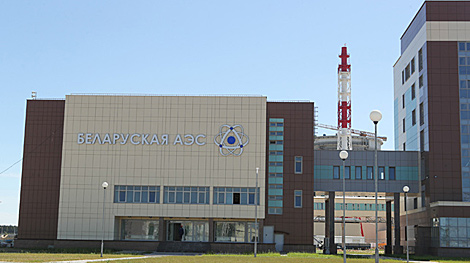Events
Radiation levels around Belarusian nuclear power plant continuously monitored

An archive photo
MINSK, 16 February (BelTA) – Radiation levels are continuously monitored in the area of the Belarusian nuclear power plant, representatives of the National Center for Hydrometeorology, Radioactive Contamination Control, and Environmental Monitoring of the Belarusian Natural Resources and Environmental Protection Ministry told BelTA.
According to the source, at the national level Belarus takes the necessary measures to observe the International Atomic Energy Agency’s fundamental nuclear safety principles, which have been developed taking into account the world experience of construction and operation of nuclear power plants, at all stages in the lifecycle of the Belarusian nuclear power plant. A system to monitor radiation levels around the Belarusian nuclear power plant was designed and deployed during the Belarusian nuclear power plant design and construction stage in accordance with the International Atomic Energy Agency’s recommendations.
An automated monitoring system
Designed to monitor radiation levels in real time, the automated system represents an important component in the safe operation of nuclear power plants. The system is made of ten automatic measuring stations located in the area of the Belarusian nuclear power plant. Three stations are located in the Belarusian nuclear power plant observation area (12.9km radius). Specialists noted that the location and the number of the automatic measuring stations had been chosen in order to enable sufficient radiation monitoring taking into account the local terrain, climate peculiarities, and the presence of transport communications and sources of electricity.
The automatic measuring stations are fitted with gamma radiation sensors and spectrometric sensors. The latter can measure the gamma-ray spectrum and identify the radionuclides. The sensors are mutually complementary and work in different measurement ranges. The data is continuously transmitted and visualized every ten minutes in the radiation monitoring division of the National Center for Hydrometeorology, Radioactive Contamination Control, and Environmental Monitoring.
Observation stations in the Belarusian nuclear power plant area
Since 2006 the National Center for Hydrometeorology, Radioactive Contamination Control, and Environmental Monitoring has been participating in defining the “zero” background radiation levels in the Belarusian nuclear power plant area. It allows clarifying the current state of the environment in this area. The accident-free operation of a nuclear power plant releases inconsiderable amounts of radioactive substances. This is why the environmental impact of the nuclear power plant has to be evaluated by comparing current background radiation levels with the figures recorded prior to the nuclear power plant’s launch, the source explained.
Radiation monitoring in the Belarusian nuclear power plant observation area (12.9km radius) covers atmospheric air, surface waters and hydrographic network objects, subsurface waters, including drinking water, soil, ground vegetation, components of agricultural environmental systems and agricultural products. At present the National Center for Hydrometeorology, Radioactive Contamination Control, and Environmental Monitoring monitors radiation levels inside and outside the observation area. Since 2017 radioactive pollution of surface waters has been monitored by observation stations located along the Viliya River, Lake Svir, and Lake Naroch. Apart from that, filter-ventilator units for collecting surface air samples were installed at the weather stations Lyntupy, Oshmyany, and Naroch in 2018. Those are the weather stations that are closest to the Belarusian nuclear power plant.
Cooperation with Swedish specialists
In March 2019 Belarus accepted the proposal of Lund University, Sweden in favor of the joint evaluation of pre-launch background radiation levels in the Belarusian nuclear power plant area. The Belarusian-Swedish-Russian expedition involved representatives of the Radiobiology Institute of the National Academy of Sciences of Belarus, the National Center for Hydrometeorology, Radioactive Contamination Control, and Environmental Monitoring, the National Applied Science Center for Hygiene of the Belarusian Healthcare Ministry, and the St Petersburg Radiation Hygiene Research Institute. The Swedish specialists collected samples not only within a 20km radius around the Belarusian nuclear power plant but also in parts of Lithuania, which are closest to the Belarusian nuclear power plant.
“Unfortunately, the work has been temporarily suspended due to the COVID-19 pandemic. Nevertheless, Belarusian-Swedish cooperation will allow getting an independent evaluation of pre-launch background radiation levels in the Belarusian nuclear power plant area. It will demonstrate the transparency of processes relating to the discharge of oversight functions by the Natural Resources and Environmental Protection Ministry with regard to the environmental safety of the nuclear power plant. This interaction will also help build up trust in radiation monitoring results and will confirm the authenticity and representativeness of the data we are getting,” the National Center for Hydrometeorology, Radioactive Contamination Control, and Environmental Monitoring is convinced.







 print version
print version make home page
make home page add to bookmarks
add to bookmarks

